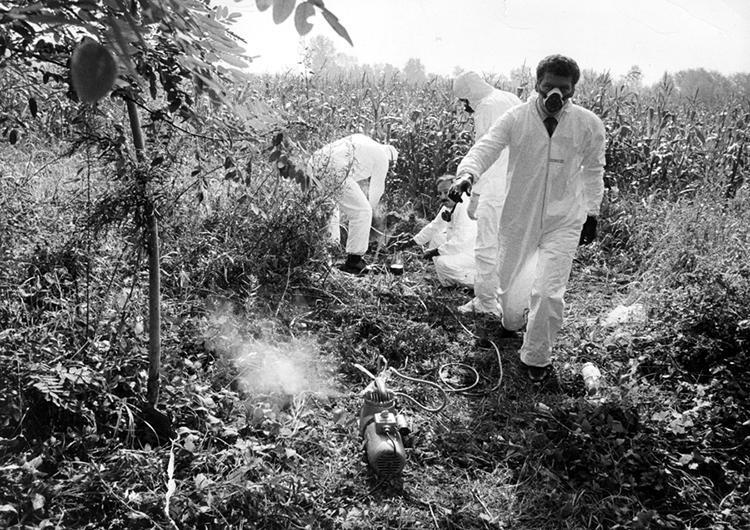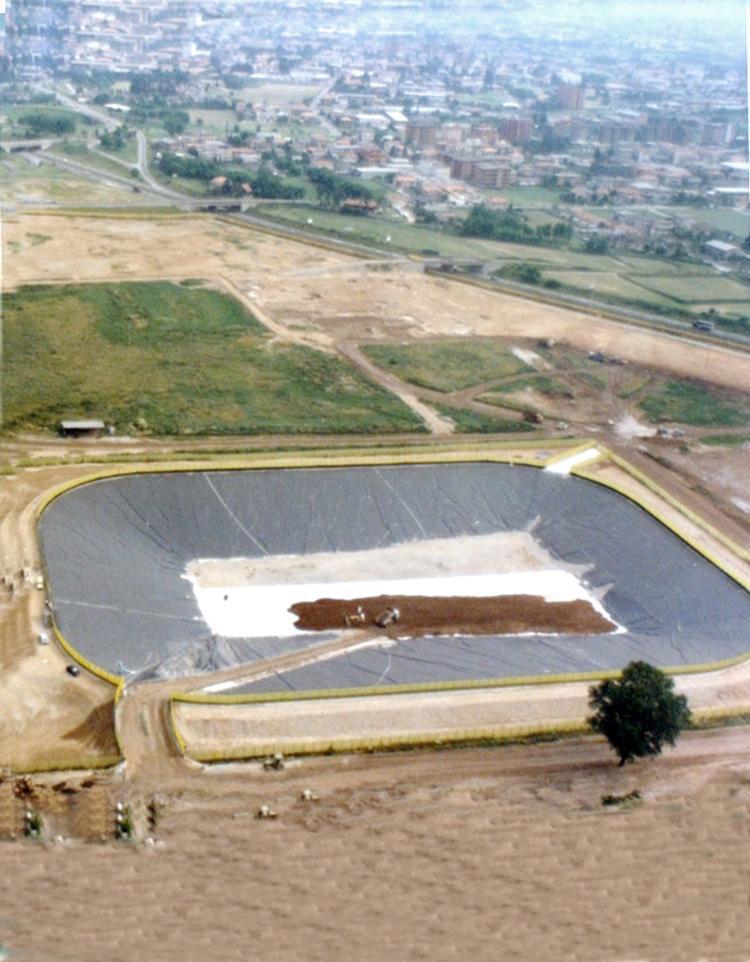La Roche and its overwhelming responsibility in the Seveso disaster
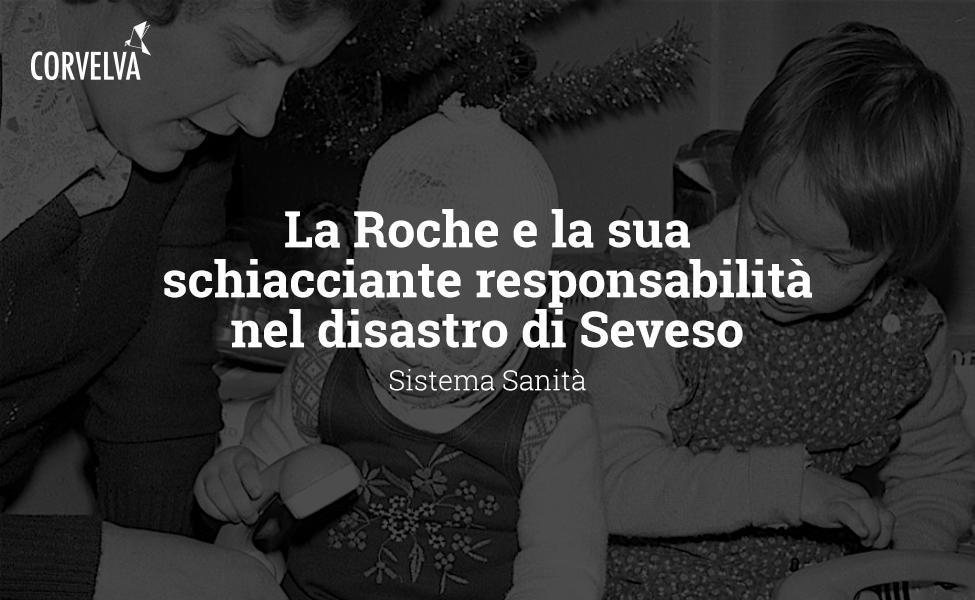
1945. A new chemical industry was born in the area.
On November 29, 1945 ICMESA (Industrie Chimiche Meridionali SA with offices and management in Milan) submitted to the Corps of Civil Engineering of Milan an application for authorization to build a new factory for the production of pharmaceuticals in its own land located in the territory of the Municipality of Meda. ICMESA was not a newly created company. Its origins in fact dated back to 1924 when the company Industrie Chimiche K. Benger and CSA (formerly Southern Chemical Industries K. Benger and C.) changed its company name to that of Southern Chemical Industries SA ICMESA. The headquarters and factory of the factory were in Naples and the activity was based on the manufacture and sale of synthetic aromatic products, intermediate products (for the pharmaceutical industry and for that of organic dyes) and basic products for the industry chemistry.
In 1947 the shareholders' meeting, while maintaining the registered office in Milan, resolved to change the name of the company, transforming it into ICMESA SA, Industrie Chimiche Meda, Società Azionaria. Also in 1947, after the construction of the factory was complete, ICMESA actually started its activity in Meda.
The XNUMXs and XNUMXs saw the size of the factory steadily expand. Givaudan & C. of Vernier-Geneva always remained the main shareholder of the company.
In 1963 the multinational Hoffman-La Roche, based in Basel, bought L. Givaudan & C. and consequently, first through Givaudan and then appearing in first person among the shareholders, became the owner of ICMESA.
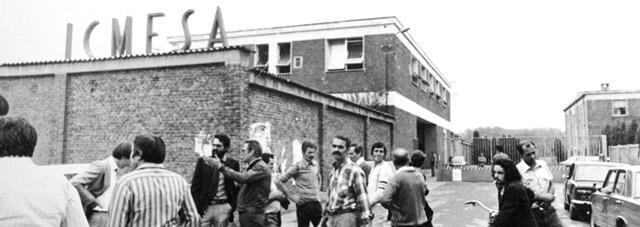
1948-1976. A factory and the habit of its poisons.
As early as 1948, ICMESA had raised protests by the people of Seveso regarding the gases and odors from the Certesa (or Tarò) stream which were also attributable to the discharges of the Meda factory.
The following year the Town Council of Seveso dealt with the question of the water that was introduced into the stream not conveniently purified by ICMESA and that spread "nauseating and unbearable odors in the atmosphere".
The councilors noted the continuous complaints of citizenship and made them their own because in some areas of the municipal area the air became "absolutely unbreathable from the fumes coming from the runoff waters of the ICMESA company in Meda".
For this reason the City Council invited the mayor to ascertain the harmfulness of the gases emitted by ICMESA and, in concert with the colleague of Meda, to take action to lodge a protest with the "superior authorities" in order to oblige the company to carry out those works which they became necessary to eliminate the serious hygiene problems encountered.
After a few years, on May 2, 1953, the veterinary office of the Municipality of Seveso ascertained an intoxication of sheep due to the ICMESA discharges. Having gone to the factory "also in order to have necessary elements on which to direct the care of the affected and not yet deceased sheep", the consortium veterinarian Malgarini did not obtain any clarification regarding the "reticence" of the representative of the Meda plant.
A couple of months later, on 1 July 1953, the health officer Del Campo informed the Mayor of the Municipality of Meda that "an unpleasant toxic episode with the death of 13 sheep" had occurred in the Certesa stream "immediately downstream of the discharge of waste water from the ICMESA factory ". In his report, the health officer, after highlighting that ICMESA produced products of the series "acetates, salicitates and alcohols", ascertained the harmfulness of the waters of Certesa, caused by the discharge of the factory. For these reasons Del Campo believed that there were "all the extremes" to qualify the Meda factory as "Unhealthy Industry".
After a few days, on July 7, 1953, the ICMESA, with a long note signed by the managing director Rezzonico, stated that he did not agree with what was claimed by the health officer and rejected the responsibility for the death of the 13 sheep. The company then did not accept the possibility of being classified as "Unhealthy Industry" and highlighted the fact that the waters upstream of the plant also emitted disturbing fumes.
Finally, ICMESA undertook to improve the tools for the elimination of unpleasant smells and noises, hoping that the episode would not feed the atmosphere "of diffidence and criticism" around the factory and its activities, which, again according to company management , found no reason in the facts "seen objectively and serenely".
On August 28, 1953, ICMESA reiterated its position also considering the accusations made against an industry that worked "honestly and in an environment and health condition among the most modern in Italy" as "absurd".
The mayor invited the company to take the necessary precautions in burning waste to avoid the hygienic inconveniences complained of by the population.
On May 14, 1962, ICMESA, once again, rejected the charges by limiting the episode to a single fire, which developed for unknown reasons and promptly extinguished after three quarters of an hour. However, the company ensured maximum precautions to avoid other such inconveniences.
After almost a year, on May 7, 1963, the mayor of Meda again called ICMESA into question on a new fire of slag and waste from work abandoned on the unenclosed land owned by the company emphasizing the panic originated in the population and the serious danger to the railway and roads. ICMESA was also invited to take action to avoid new episodes of this kind and was reminded that the slag and waste should not be abandoned on the ground, but "destroyed with procedures that safeguard public or private safety".
On 11 May 1963 the new ICMESA replica dumped the responsibility for this second fire on shepherds who had stopped near the factory and, after lighting a fire, had fled. The company assured that it would provide more frequently than in the past to cover the slag with landfill, to avoid the repetition of the inconvenience. Finally, ICMESA pointed out that the locality was however isolated and sufficiently spaced both from the railway and from the factory side and therefore there could be no concern for the population. At the request of the mayor, on May 25, 1963, ICMESA also undertook to fence the slag deposit north of the factory.
The problem of pollution of the Tarò torrent was always the center of attention of the Province since, again in 1965, the analyzes carried out revealed the non-acceptability of the waters both from a chemical point of view, because they are highly polluted, and from a biological point of view. since defined as "highly toxic toxic". It therefore required an improvement of the treatment plant which was imposed on ICMESA in November 1965. An inspection carried out in 1966 found that, despite the changes made, the plant continued to not give satisfactory results.
On October 18, 1969 the umpteenth report of the Hygiene and Prophylaxis Laboratory of the Province was received by the Municipality of Meda:
"Repeated inspections carried out both inside and outside the Icmesa plant in Meda, lead to the conclusion that the situation of the discharges of the company in question must be reviewed in the light of new findings, more serious and more complex than those taken so far in consideration, as the pollutants due to its processes are not limited to water tributaries, and therefore of a primary and immediate nature, but extend and multiply with the drawbacks that can derive from the unknown evacuations, in losing basins outside the plant, of substances solid, mucilaginous and liquid of a different and unspecified nature and from the open, primitive and uncontrolled combustion of products of various kinds [...]. These operations, in addition to the multiple nauseating, persistent and persistent odors, which affect a radius of a few hundred meters and are closely accompanied by the visitor's senses and clothing for a few days, in fact represent a constant and constant danger for aquifers and for the same Tarò torrent that flows a few tens of meters [...]. It is therefore with keen concern that this Laboratory signals such a situation, stigmatizing the absolute lack of caution and foresight that the company had and has the duty to observe in respect of the public good and an elementary common sense. Such ugliness, ascertainable and visible for all to see, cannot be tolerated, nor can companies claim that time passes and nature provides.
On 18 December 1969, the health officer Sergi, referring to the report of 18 October, stated that ICMESA represented "a significant serious source for pollution", both liquid and gaseous. Sergi also asserted that "the harmful action of this pollution" was not limited to the area surrounding the plant, but through the surface aquifer, the atmosphere and by means of the Tarò torrent, this extended "to areas even far from the polluting source" . "Given the seriousness of the aforementioned results" the health officer asked the mayor of Meda to issue an ordinance "pursuant to art. 217 of the TULL.SS. 27.7.1934, n. 1265 ″ with which the ICMESA had to be imposed "the adoption of effective, stable and continuous measures, suitable to remove (or at least to reduce to the minimum tolerable) the multiple drawbacks found".
At the beginning of 1974, ICMESA again insured the Province of Milan and the Civil Engineering Office with respect to the imminent start of works for the construction of the new water purification plant, which, however, in fact never started, as evidenced by a new analysis carried out by the Province on December 2, 1974 which came to the following conclusions:
“The used waters that ICMESA introduces into Tarò are polluted from the chemical side and extremely high toxicity from the fish-toxicological one. Therefore specific and efficient remediation works are urgently needed. The company must also provide for a more suitable arrangement for the sludge which, currently, by percolation, can pollute the underground aquifers ".
At the end of 1974, the ICMESA technical director, Herwig Von Zwehl, was reported to the judiciary for "having with several enforcement actions of the same corroded criminal design and adulterated groundwater destined for feeding before they were drawn, making them dangerous for the public health, through the discharge of sludge into a losing pool. "
On September 5, 1975, following a new inspection, the Province confirmed the accusations of groundwater pollution against the Meda factory. Despite the Province's report, Herwig Von Zwehl was acquitted on 15 June 1976 for "insufficient evidence".
July 10, 1976, Saturday. In Seveso it was sunny.
It was a Sunday afternoon. July 11, 1976. The mayor of Seveso, Francesco Rocca, was visited by two ICMESA technicians. The two technicians reported to him about an accident that occurred on July 10 inside the factory. Remember Rocca:
The description was short, mostly technique, of what had happened. For the first time I heard about "trichlorophenol", the tcf. "It is an intermediate basic chemical" explained dr. Paoletti. “You can also find it at the grocer, it is also used for herbicides. It is precisely the reactor that produces it has blown up. It is not known why. Yesterday morning at six the shift ended and like every Saturday they let the reactor cool down. Tomorrow the production of TCF would have resumed regularly, if this uncontrolled reaction inside had not taken place, which slowly raised the temperature and pressure, until the outbreak occurred shortly after noon ".
On July 12, 1976 the factory management wrote to the alternate health officer Dr. Uberti, who replaced the owner, Professor Ghetti, on vacation:
With reference to the previous information and interviews and to your visit today, we confirm the following: Saturday 10 July 76 at 12.40 hours approx. an accident occurred inside our factory.
We would like to point out that the factory was stopped for the normal day of rest on Saturday with the presence of only maintenance personnel and various works, which did not affect the department in question.
The causes of the accident are still being examined and examined. For now we can assume that the dynamics of the facts occurred due to an inexplicable exothermic chemical reaction in a reactor left in a cooling phase. The following substances were found in the reactor: tetrachlorobenzol, ethylene glycol and caustic soda which lead to the formation of crude trichlorophenol.
At the end of normal working hours (at 06.00 on Saturday) the reactor was left stationary without stirring and heating, as usual, containing the crude product.
We do not know what could have happened until 12.40, when the safety disk broke, letting out a cloud of vapors which, after having invested the plants inside our factory, headed south-east, blown by the wind and dissolving in a short time. Not being able to evaluate the substances carried by these vapors and their exact effect, we proceeded to intervene at the neighbors to prevent the consumption of any garden products, knowing that the finished product is also used in herbicide substances. For the moment we have suspended this process, concentrating our research in explaining what happened, to avoid similar cases in the future.
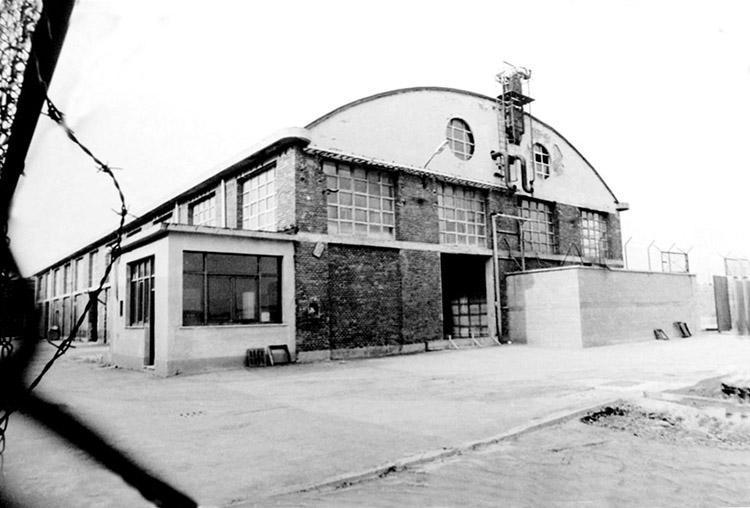
The technical director of Givaudan, Dr. Sambeth, having heard of the accident on 11 July at 11.45 am, hypothesized the possibility that TCDD had occurred.
The scientific certainty of the leakage of TCDD was confirmed on July 14 by the analyzes carried out in the laboratory of the Givaudan in Duebendorf (Zurich) on material taken in the environment surrounding the ICMESA. Even after the initial suspicions were confirmed, both the ICMESA and Givaudan managers did not report the circumstance to the Italian authorities. Only eight days later, on 18 July, when the director of the Provincial Chemical Laboratory of Milan proposed the possibility of the presence of dioxin to the managers of the Meda factory, the arrival of the director of the Givaudan Laboratory was announced in Italy and only on 19 July. 1976, ICMESA and Givaudan decided to admit the seriousness of the situation, officially declaring the presence of tetrachlorodibenzo-para-dioxin among other highly toxic substances. Instead, only on July 21, 1976, the director of the provincial laboratory of hygiene and prophylaxis, Cavallaro, and the health officer of Seveso, Ghetti, from the Laboratories Givaudan of Duebendorf, confirmed to the mayor of Seveso the presence of dioxin in the toxic cloud that escaped on July 10.
In the "days of silence", or in the five days that passed between the escape of the cloud and the first measures taken by the mayors of Seveso and Meda, the dynamics of the accident was outlined with greater precision. The carabinieri of Meda in fact, as part of the judicial police activity, confirmed that the cloud had formed due to the breakdown of the safety disk of the reactor "A 101" and this due to an exothermic chemical reaction. The rupture of the disc caused the violent discharge of particles of glycol vapors and various particles, through the vent pipe.
The diffusion of particles took place essentially in the first moments and, overall, during the three phases of the accident about 400 kg of reaction and reactive products leaked. The toxic cloud included, among other things, trichlorophenol, caustic soda and 3,5% dioxin, therefore equal to 14 kg. The discharge was dragged by the wind that carried it along its path south, southeast. As noted by the weather stations of Carate Brianza and Como, when the accident occurred, the wind blew at a speed of about 5m / s.
Still on July 18, when the mayor of Meda ordered the closure of the factory for precautionary purposes, the management tried to ensure the authorities by supporting the non-hazardous performance of the work.
July 15, 1976, Thursday. The first steps.
After the first checks carried out on July 12, during which the alternate health officer had not detected any damage to people but only the burning of the plants hit by the cloud, on July 15 Uberti ascertained the numerous cases of intoxication and recommended to the authorities to take urgently "Immediate measures to protect the health of the population". The mayors of the two municipalities had to:
- Delimit the area with posts bearing the following text as text: “Municipalities of Seveso and Meda. Caution. Area infested with toxic substances. It is forbidden to touch or ingest fruit and vegetables, avoiding contact with vegetation, land and herbs in general ".
- Notify the population by means of a manifesto not to touch absolutely any vegetables, land, grass or animals in the demarcated area and to maintain the most scrupulous hygiene of hands and clothes, using water as the best detergent.
Pending further communications "by the laboratories of the ICMESA company", on how to act and on any prophylaxis rules to be prescribed, the alternate health officer reserved the right to order the evacuation of the affected area.
On the same day of the Uberti communication, the mayors of Seveso and Meda declared the area of the San Pietro neighborhood adjacent to the ICMESA infested with toxic substances and, taking into account what was prescribed by the health officer, forbade the population to touch vegetables, land, grass and animals of the demarcated area and prescribed to maintain the most scrupulous hygiene of hands and clothes.
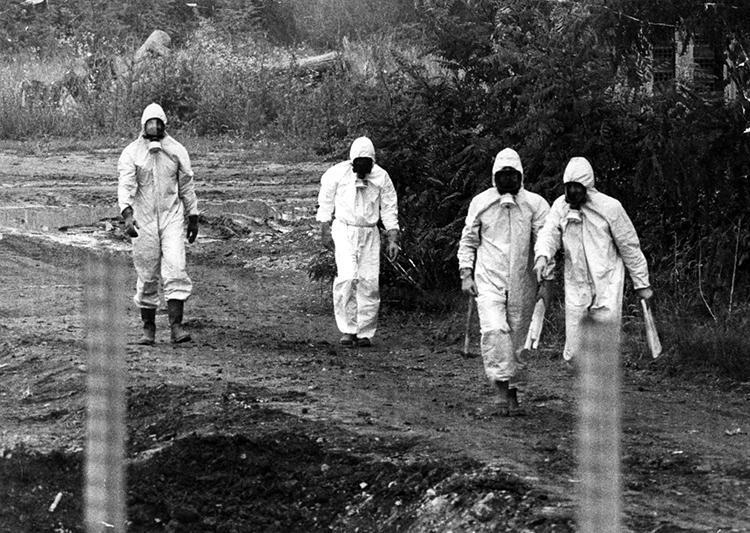
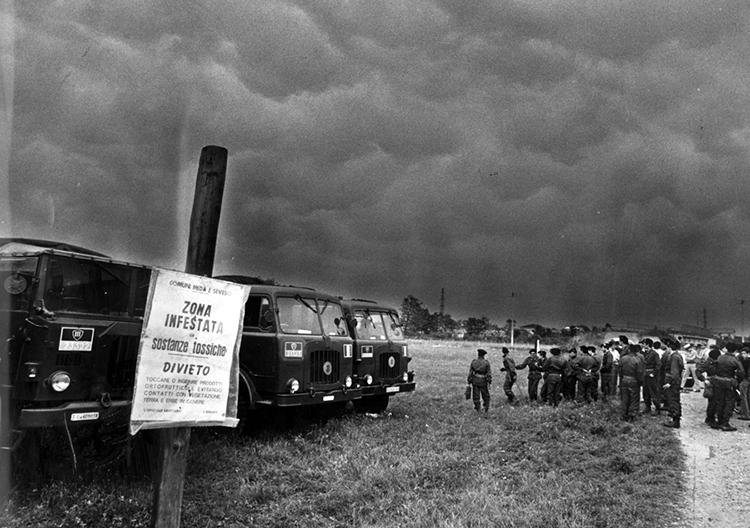
July 17, 1976, Saturday. After 'week of silence' the accident becomes news.
Meanwhile, news of the toxic cloud leak was becoming public knowledge. Rocca in fact, on July 15, had taken care to inform the reporter of "Il Giorno" Mario Galimberti and on July 17 the Milanese newspaper published an article on the page of the chronicle of the province. On the same day, a short note appeared in the "Corriere della Sera" which reported the first details of the accident.
After the closure of ICMESA, which took place on 18 July, the following day the mayor of Meda ordered the closure of the CRC-Encol company, located near the chemical factory, for precautionary and provisional purposes, while the mayor of Seveso ordered the population not to ingest products of animal origin from the polluted area or in any case suspected of pollution.
On July 22, while the situation worsened with the progressive establishment of pathological phenomena and the intense death of animals, the census of the animals of the polluted area began. It was also decided to send 80 children to the colony and an outpatient clinic was opened in Seveso with personnel made available by the dermatological clinic of the University of Milan. The following day was also dedicated to the organization of health structures for checking and controlling the situation with the entrustment of the vegetation control to the Institute of Plant Pathology to define the polluted area and the assignment to the regional veterinarian of the tests on dead animals. The clinical laboratory opened in Seveso was also assigned to Professor Ghetti and the province's hygiene and prophylaxis laboratory was commissioned to carry out the necessary tests to know with certainty the chemical aspects of the contamination.
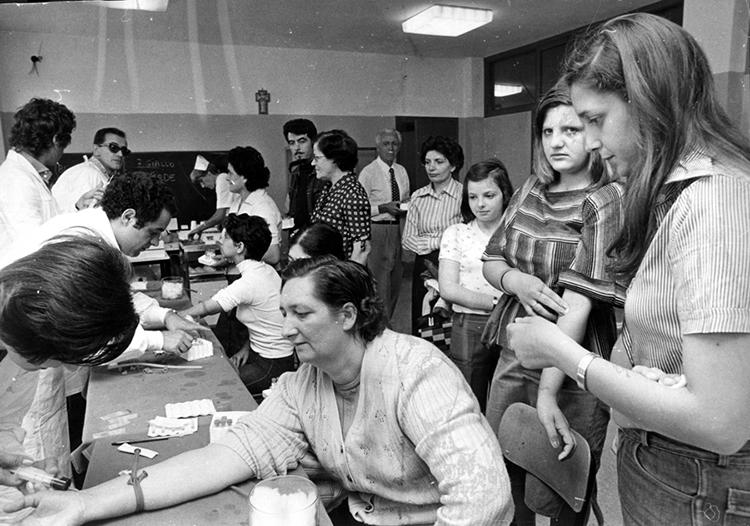
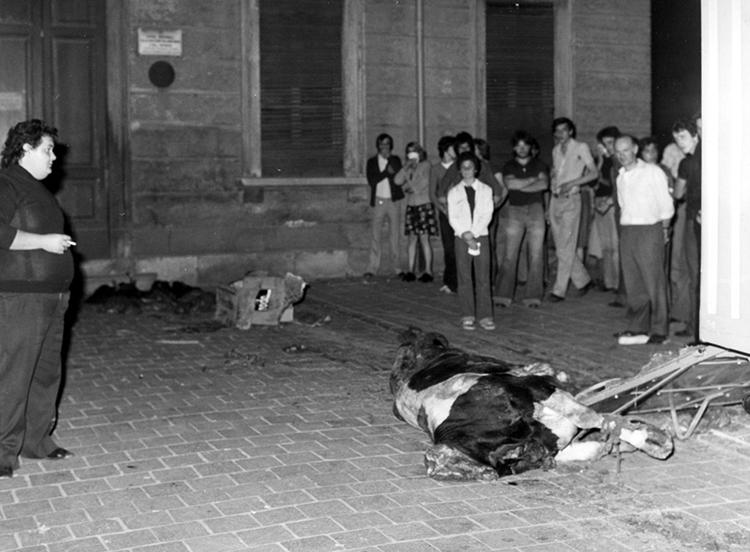
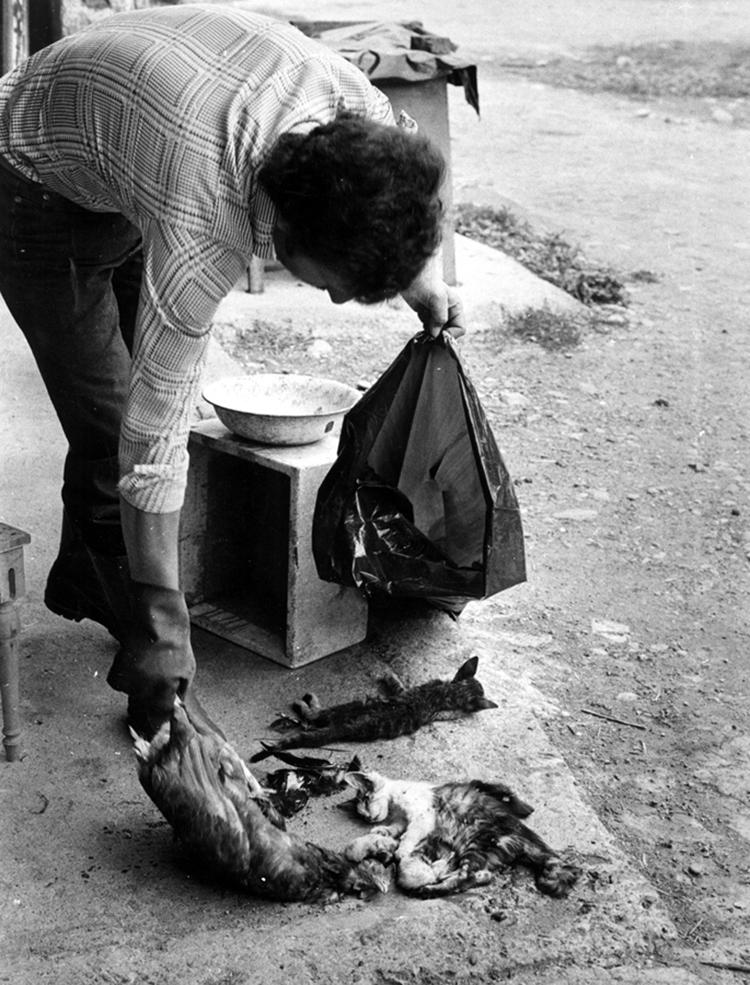
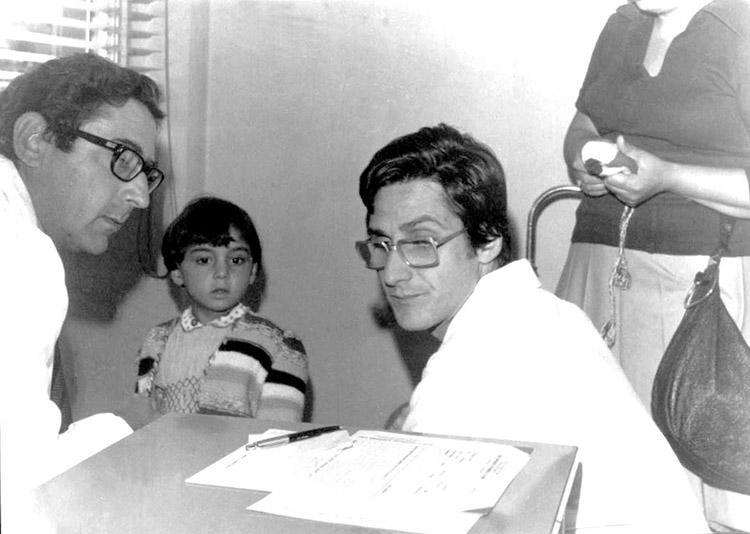
The first admissions.
Finally, on 23 July, after a meeting in Lugano, based on the latest results of the analyzes on the contamination of the area and also considering the reports relating to other incidents that previously occurred in England and Germany, the ICMESA managers, in agreement with Dr. Vaterlaus, head of the Givaudan research laboratories, presented their conclusions and recommendations to the health officer, where they highlighted the following:
- The quantity to which the populations of Meda and Seveso have been exposed appear lower than in the cases of intoxication known in the other accidents which occurred in other cases.
- The clinical symptoms of which we are aware of the people hospitalized in Niguarda and Mariano Comense correspond exactly to moderate effects, compared to the clinical symptoms observed in the other accident cases mentioned. [...]
- Recall that the analysis program was started immediately after the accident and indicated, in the immediate vicinity of the place where the accident occurred, some contamination. Given the complexity of the analysis procedure, however, a fair amount of time elapsed between taking the samples and obtaining the results.
- The information we have been able to obtain on the development and follow-up of previous accidents of this kind also indicates that direct contact of the toxic substance on the skin can be dangerous.
After setting out its conclusions, "with the intention of avoiding all contact possibilities" that could still exist in the area and in order to "allow the execution of the decontamination programs", ICMESA proposed to adopt precautionary measures that provided "The temporary evacuation of the affected area and delimited on the attached plan (red and blue measuring points)" until further studies allowed "without any reasonable doubt the reintegration of housing". Residents of the area to be evacuated also had to avoid "carrying all personal items, especially clothes", of which "the possibility of contamination" was presumed.
Also according to ICMESA, the authorities should have, on the one hand, ensured rigorous control so that no plant products were consumed "by both men and pets", on the other "maintain a medical surveillance program on people hospitalized during many months "and" adopt a medical population control program "that could have come into contact with the contamination zone, even if no visible symptoms had occurred.
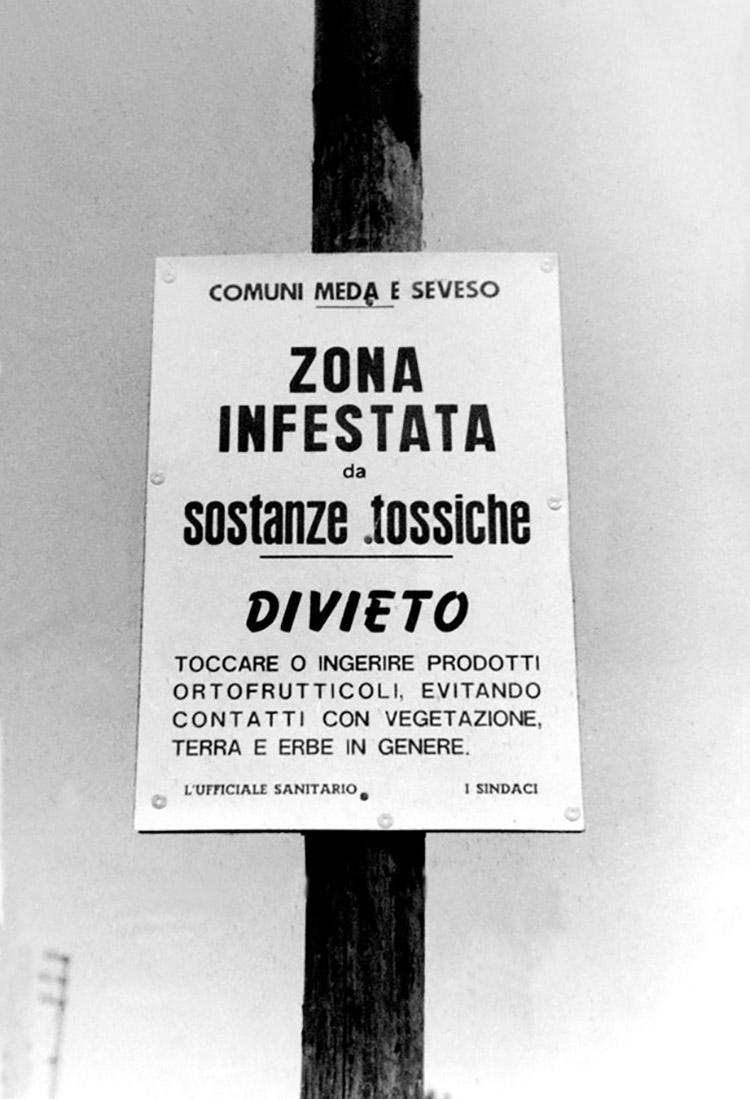
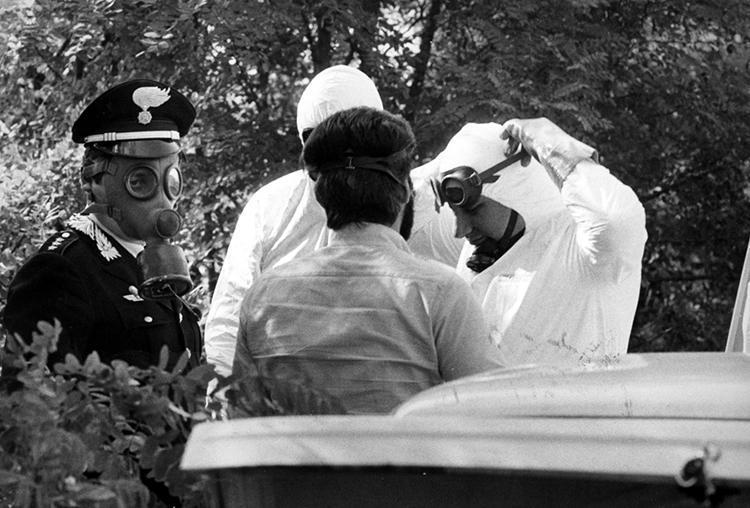
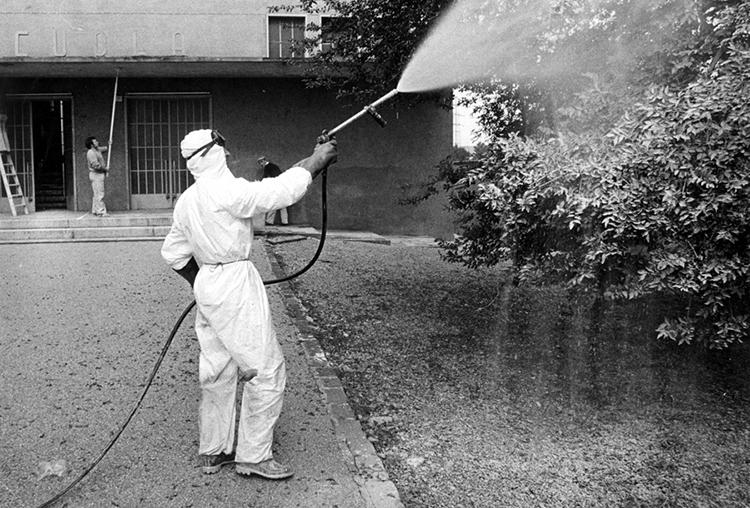
July 26, 1976, Monday. The first evacuation. 'Zone A' is born.
Only on Friday 24 July, fourteen days after the release of the toxic cloud, the cross-checking of the analyzes carried out by the Italian health structures with those of the Givaudan Laboratories confirmed a significant presence of TCDD in the area most affected by the toxic cloud. The area was extended, starting from the factory, to the south for an area of about 15 hectares and for a depth of about 750 meters. It was also decided to evacuate the population, to fence the area and forbid access to it. Thus Zone "A" was born.
With ordinances number 48 and number 6 of 24 July, the mayors of Seveso and Meda imposed evacuation from the polluted area by the following Monday 26 July with the consequent transfer of the families concerned for the period strictly necessary to carry out the operations of quenching and tempering. Rocca and Malgrati also forbade the removal of tools of any kind from the houses and the carrying of farmyard animals which the staff of the veterinary offices would feed.
The evacuation is extending.
On Monday 26 July, 213 people (176 from Seveso and 37 from Meda) were dismissed by the two Municipalities and with the collaboration of the police and placed mainly at the "Leonardo da Vinci" hotel in Milan-Bruzzano. The Corriere della Sera wrote:
Two hundred people have been behind the barbed wire laid around the San Pietro neighborhood by soldiers of the 3rd artillery on horseback since yesterday morning. The military truck arrived in front of the town hall of Seveso at half past eight in the morning. Led by the technicians of the municipality, the soldiers reached what is marked as zone A on the maps, an area of 15 hectares which is the most contaminated area. In pouring rain, the men began to lay double barbed wire fences, placed the Friesian horses to block the access roads to the neighborhood, planted the fence posts in the ground.
The following day the Municipality of Seveso was forced, due to the "worsening of the situation", to evacuate 19 other people, including 3 children, promptly sent to the medical-psycho-pedagogical colony of Cannobbio. In the meantime, another 114 families were evacuated, corresponding to 398 people, including 86 children. The results of the further laboratory tests had in fact advised the regional health authorities to expand Zone "A", the depth of which was brought to about 1600 meters.
In the following days, the analyzes led to a second expansion of Zone "A", with an increase in depth to 2200 meters. This enlargement also led to the decision to proceed to a further evacuation. A total of 736 people were removed (676 from Seveso and 60 from Meda) for a total of 204 families and the evacuated and fenced area covered an area of 108 hectares, with a perimeter development of 6 kilometers. A farm, 37 craft businesses, 10 commercial establishments and 3 industries were forced to suspend the activity for a total of 252 employees.
The first balance for dead animals, killed or used for experiments amounted to 2.953. The death of animals was continuous and included not only pets. Pheasants, quails, siskins, goldfinches, swallows and sparrows were also found dead in the fields. Remember Angelo C. who lived in the area:
"I haven't seen swallows anymore and when you don't see swallows anymore it's ugly, because something really happened and when the dioxin of swallows came out they didn't see it anymore, they all disappeared".
A brigadier of the zoophilic police of Milan said that among the pets the dogs and cats were the ones who made the most impressive end: either they slowly went out losing slowly their strength, or they seemed to go crazy. The cats meowed constantly, the dogs became aggressive, nervous, unapproachable.
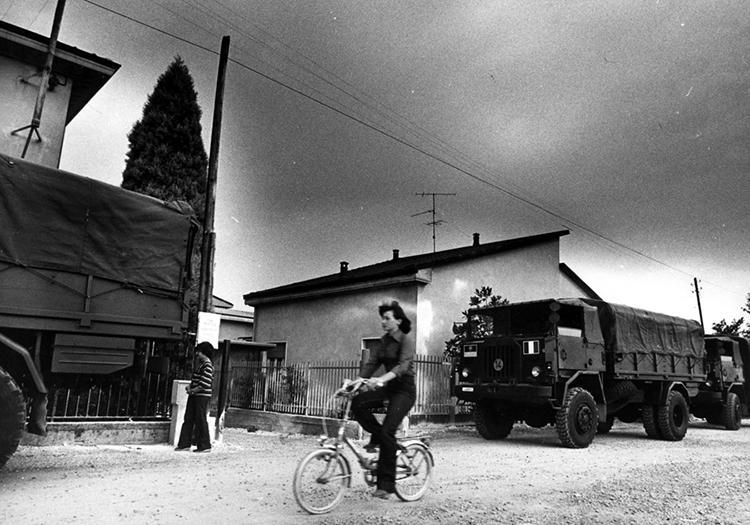
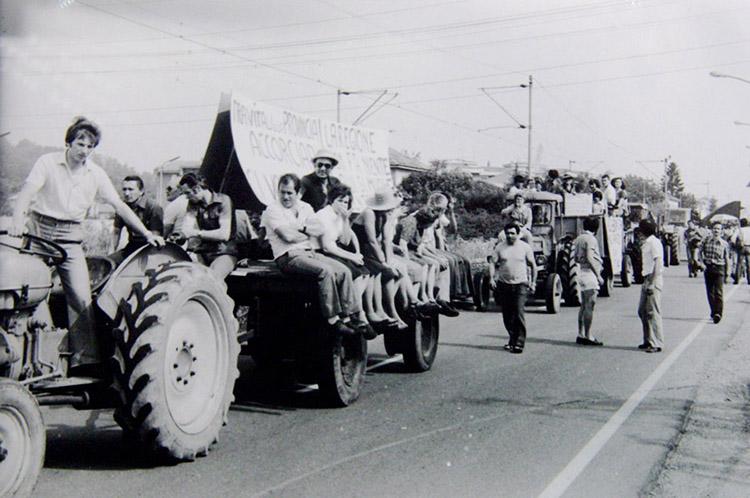
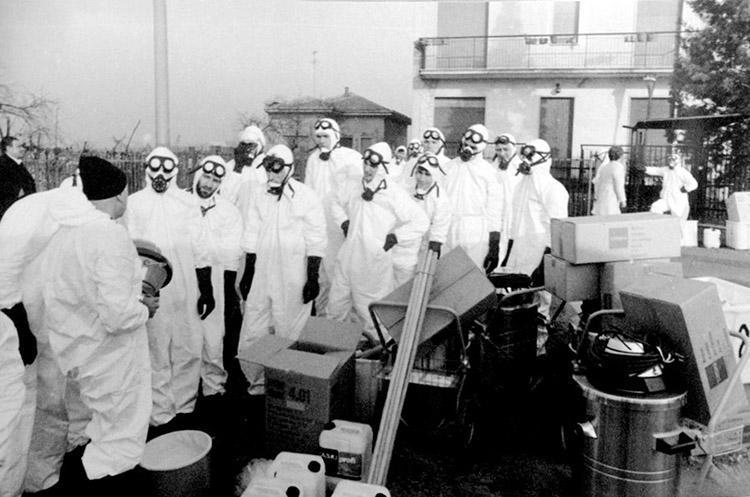
The mapping of prohibitions.
In the days following the "official" mapping of the area took on its definitive conformation, with the indication of an area with a lower pollution rate (Zone "B") which also affected the Municipalities of Cesano Maderno and Desio for an area of 269,4, 16,5 hectares with a perimeter development of 5 kilometers and a third area (Zone "R" or "Respect") that is not polluted or polluted with values below 1430µg / m² which involved an area of 26 hectares with a perimeter development of XNUMX kilometres.
The mapping of the area was first drafted on August 10 by the State Technical-Scientific Commission and definitively approved by the Lombard Regional Council on October 7, 1976.
In August the mayors of Seveso and Meda issued a new series of prescriptions for the inhabitants of areas "A" (evacuated), "B" and "Respect".
In particular, the mayor of Seveso on August 24, while limiting access to Zone "A" exclusively on authorization ", prohibited for Zone" B "any work that caused" movement of the ground and lifting of dust "and any manipulation of the materials that lay outdoors at the time of the accident. The speed of vehicles on unpaved roads should not exceed 30 km / h, it was forbidden "to grow or collect fodder, grass, flowers, fruit, vegetables, vegetables, as well as to breed animals except those of affection" and "all livestock products of animal origin (milk, eggs, honey, etc.) ". In Zone "B", finally, all crafts and industrial activities were prohibited.
In addition to the prohibitions set out, the mayor invited the people of Zone "B" to carefully observe a series of indications such as "immediately and long washing of the hands" if they had touched allegedly polluted objects and "in any case wash them frequently during the day to eliminate any trace of toxic substance possibly present, albeit in small quantities in the powder ". A frequent and thorough cleaning of the whole body (bath or shower every day) with the use of soap was then recommended. Instead, exposure to sunlight for prolonged periods was discouraged and the ingestion of any animal or vegetable food from the polluted areas was defined as "highly dangerous". Finally, it was prudent that "all people exposed to the risk of contamination" refrained from procreation for a period of time that "as a precaution" could be indicated in six months. In fact, the appearance of malformations in children conceived by people exposed to dioxin could not be excluded, "although it has not yet been demonstrated for the human species".
In order to make all the necessary information available to the people concerned, the mayor recalled the presence of the family counseling center, open in Seveso every day from Monday to Friday at middle school.
For the inhabitants of the "Respect Zone", with the ordinance of August 24, Rocca reconfirmed what was prescribed on August 18, namely the obligation for the population to intensify the rules of personal hygiene, the ban on consuming and selling fruit , vegetables and other vegetables produced in the same "Respect" Zone and the obligation to kill all farmyard animals with the consequent prohibition of breeding them. In the ordinance, the mayor took care to specify that the safety belt had been implemented only to strengthen sanitation. The investigations carried out had not "found the presence of dioxin" and therefore the standards indicated were intended only as a precautionary measure and given in the interest of the citizens.
The following months.
On 11 October 1976 a group of displaced people from Zone "A" re-occupied peacefully part of the polluted area and temporarily blocked the Milan-Meda highway. The demonstrators asked the authorities to reclaim the area immediately, to return to their homes as soon as possible and to reopen the Corso Isonzo to traffic, to allow direct connection with the center of Seveso. After exhausting negotiations, only late in the evening the occupants decided to leave the polluted area, with the promise by the authorities to immediately open a communication route between Baruccana and Seveso and to study a system with the representatives of the IDPs to block the highway after reclamation.
Another reason for contrast between the regional body and the population of Seveso was the choice to privilege, among the various hypotheses to carry out the reclamation of the territory, the construction of an incinerator oven to eliminate dioxin. At the end of August, the Region had asked the Municipality of Seveso to express an opinion on the placement in the Sevesine territory of an incineration plant that would occupy an area of 36.000 m². The City Council, with one abstention, decided to place the oven in an area located north of the cemetery.
This decision was contested by the population to such an extent that the City Council of Seveso, on November 14, decided to repeal its resolution of August 29 and to ask the Lombardy Region and the Province of Milan to suspend the contract for the construction of the oven. incinerator and to accept the proposed reclamation of the "Citizen Coordination Committee". The latter had suggested the method of controlled unloading, that is to solve the problem with the placement of the polluted material in reinforced concrete, waterproof, earthquake-proof and totally or partially encased in the ground, covered with earth and greenery. According to the committee's proposal, the caissons should have been placed on the ICMESA site.
All this contributed to exacerbate that sense of mistrust towards the Region that had already emerged in the first days after the accident and which forced the regional body to "reassure" the inhabitants of Seveso about its business. In November, a poster signed by Golfari, the president of the Regional Council of Lombardy, appeared on the walls of the town, which ended as follows:
Citizens of Seveso! To avoid confusion of news, we will keep you periodically informed with posters. The Region, in fact, is the only authority that can tell you how things really are. While we count on your sense of responsibility, you can always count on our commitment and solidarity.
In December 1976 the protest of the population against the inertia of the Region and the Province was renewed with a new blockade of the Milano-Meda highway. The reasons for the protest followed those of the previous demonstration in October and concentrated on the installation of the incinerator oven and in favor of the reopening of the Isonzo course.
This umpteenth protest by the citizens of Seveso resulted in a very tough stand by Golfari who declared to the "Corriere della Sera":
In this matter of dioxin, so far we have gone in search of consensus, we have endeavored to stimulate participation. Too much. Now, however, final decisions must be made with or without the consent of the population. This whole story is now poisoned by ideology and ideology with dioxin has little to do. Now enough: the programs have been defined and I no longer intend to reopen them. I will also carry out the remediation at the cost of resorting to the public force.
Further on Golfari then pointed out that the name of ICMESA and Givaudan had disappeared from the protest posters of the people of Seveso and only the Region always appeared, "with strange convergences, such as, for example, the purchase of contaminated houses treated directly by Givaudan with union lawyers. " Eyebolts concluded:
Seveso's misfortune is a public event, it cannot be privatized. Givaudan must come here, in the Region and deal with us, agree with us. Certainly the whole issue is complex, there are a thousand problems and directions in which to move. But one must be careful and leave no room for speculation. And in this matter there are cross lines, disparate interests that intertwine, confuse the games and that I don't even know where they go.
It almost seems that it was Rivolta and I who killed the cows at the seminary, who had their liver split by dioxin, or burned the faces of hospitalized children. It seems as if dioxin has spread it over the Lombardy Region and not ICMESA. Now I don't know if Givaudan played an active part in this three tablet game. Of course I know that Givaudan pockets the profits of the nonsense of others.
1977. Mistrust increases.
On January 17, 1977 the Lombardy Region approved law no. 2 which, according to the provisions of the provision that converted the decree law of August 1976, defined the operational intervention programs to be submitted for approval by the Regional Council and introduced simplified procedures in the field of urban planning, accounting, staff recruitment and control over acts. Each operational program had to determine the specific objectives to be achieved, the competences of the various bodies with respect to the interventions to be carried out within the operational program itself, the implementation times of each intervention and the amount of the sums destined for the individual interventions.
While the regional structure was also being organized at the legislative level, in the early months of 1977 the authorities had to face the problem of illegal immigrants entering the polluted area, a situation that had been happening for many months now. Between September 1976 and February 1977, the bodies responsible for controlling Zone "A" denounced several times the presence of unauthorized persons. In a report from the Seveso municipal police dated 1 October 1976 it was reported that:
Ms O. Lina was intent on ironing in her home, asserting that she had been staying for several days day and night, not thereby complying with the order issued by the Mayor of Seveso on 30/7/76 bearing the n . 51 in reference to the known toxic event. After countless invitations, she was persuaded to leave the house without removing from it any effects deposited therein, at least personal effects, since at the time of the inspection, the O. was not protected by any suitable anti-toxic clothing and without a regular permit that is issued by the competent Authorities. [...]
It should also be noted that several houses are open and it is assumed that they are occupied night and day by the same owners.
Illegal entry into Zone "A" was also favored by the state in which "barbed wire fences were largely torn if not missing". To prevent this phenomenon, on 15 February 1977 the prefect entrusted the army with external surveillance of the most polluted area. The task was assigned to the command of the 3rd Army Corps, which assumed complete responsibility and direction for the surveillance of the area together with the carabinieri. This decision was adopted at the request of Golfari "considered the absolute need to prohibit any abusive entry into the aforementioned area of people and vehicles" who could "spread the harmful effects of toxic materials externally".
The return of the army to Seveso and Meda to monitor the polluted area contributed to increasing the tension, already high in the area due to the stalling of the reclamation operations, the increase in cases of chloracne found in boys and girls and with the detection the presence of dioxin in schools. As the "Corriere della Sera" pointed out on 11 February 1977:
Over two hundred children affected by chloracne according to official data of the first visits to some elementary schools. Three thousand seven hundred and fifty cubic meters of contaminated and rotting organic material waiting to be burned in an incinerator that is still in the world of intentions. An army of rats called back from waste and so much fear, so much disorientation in a population affected by an illness that so far no one has been able or wanted to give a dimension. This is the budget that must be drawn exactly seven months after the Seveso accident. Controversy, many and good intentions, projects too many times announced and not yet realized remain out of account.
Even the mayor of Seveso, Francesco Rocca, pointed out the difficulty of the moment:
“Seven months all lived with anguish, with fear, with the strength of the nerves that keeps you up and this, surely, is the worst moment. What do I do now? Am I going away? It would seem to me a desertion. Yet sometimes the temptation is strong. People are in turmoil. There is panic where before there was indifference, indifference. There is also anger. A big, very big distrust of institutions.
A few days after February 17, 1977, in a long interview with Giampaolo Pansa again for the "Corriere della Sera", Rocca reiterated all his difficulty in managing such a complex affair, where the different "actors" on the field tried to "defend "Their reasons with the strength of their weight, like Roche who was" a powerful force "still active in Seveso. Rocca suspected, even without having the proof, that the minimizing tendencies on the effects of dioxin came from Givaudan. The mayor of Seveso also replied about the behavior of the institutions by pointing out that these were made by people and had been subjected to "terrible stress" for months. Rocca trusted in any case on the stability of the institutions, however underlining the need for the creation of an "operational-organizational center" in Seveso that would coordinate all the work and deal with the multiple aspects of the problem.
It is necessary to reclaim: the Special Office for Seveso is born.
In the institutional sphere, on June 2, 1977, the Regional Council approved the 5 operational programs for land reclamation. Operational program number 1 was related to the investigations and controls on the pollution of the soil, water and vegetation and to the decontamination and remediation of the land and buildings, "also to prevent the spread of pollution". Number 2 concerned investigations, controls, health care and the protection of public health in the affected area. It also included checks, controls and interventions in the field of veterinary medical prophylaxis and zoo-technical assistance. The number 3, on the other hand, had to deal with social and scholastic assistance, also including "the provision of housing for displaced populations". Number 4 included the restoration or reconstruction of civil structures and non-recoverable housing structures and the "construction of the works necessary for the restoration of living conditions appropriate to the particular situation of the affected area and the production capacity of the agricultural land concerned". In this regard it must be added that since the previous February the President of the Regional Council had undertaken to give immediate start to the procedures for the expropriation and construction of the new houses that should have been ready no later than June 30, 1979. Golfari remarked in addition, the charges relating to the construction of the new dwellings would have been attributed entirely to Roche-Givaudan. Finally, program number 5 was to coordinate the interventions in favor of companies, single or associated, agricultural, artisan, tourist and hotel, industrial and commercial, which had suffered damage "as a result of pollution by toxic substances". Together with the approval of the 5 operational programs, the Region also determined the relative expenditure forecasts which amounted to a total of 121.635.866.606 lire.
The management and implementation of the programs was entrusted to a Special Office, immediately entrusted to the lawyer Antonio Spallino who, as Special Representative, had all the powers that "under the laws in force" were the responsibility "of the President of the Regional Council or the Council itself, for the implementation of the operational programs ". Spallino, Christian Democrat mayor of Como for seven years, was chosen, as Golfari explained, precisely because he was mayor of a city, that is, accustomed to dealing with people. "The choice of a prefect, added Golfari, or even of a manager for the position of commissioner could have presented itself as the end of that consensus policy that we have always followed for the reclamation in Seveso". Spallino was replaced in 1979 by Senator Luigi Noè.
At the central level, on June 16, 1977, Parliament approved the establishment of the Parliamentary Commission of Inquiry into the escape of toxic substances from ICMESA which had the task of ascertaining the activities of the Meda factory, the administrative responsibilities related to the industrial site and the consequences of the accident on the health of citizens, on the environment, on the territory and on the economy of the area. The Commission, made up of 15 deputies and 15 senators, should also have indicated the measures to be taken "to compensate citizens damaged by the accident of 10 July 1976 and to obtain compensation for damages from those responsible". Furthermore, in May 1977 Rocca and Malgrati extended the ban on the cultivation, breeding and consumption of agricultural and animal products in the "B" and "Respect" zones. For the Municipality of Seveso the extension was "indefinite", while for Meda, the mayor limited the ban to December 31, 1977.
Economic transactions.
On March 25, 1980, after a negotiation started by Golfari and lasted over a year, the interior secretary Bruno Kessler and the new president of the Regional Council Guzzetti announced that they had reached an agreement with Givaudan to ensure that the Vernier-Geneva company take on the burden of paying the sum of Lire 103 billion and 634 million for the "Seveso disaster". Kessler spoke of "proof of courage" illustrating the meaning of the initiative, while Guzzetti added that in practice "years and years of litigation" had been avoided and "compensation had practically equaled to the estimates of the damage". The lawyers Antonini and Palmieri, two of the lawyers of the College of the Region, recalled that it was the first time that a multinational could be accepted to pay for damage caused by a "subsidiary company". The transaction specifically provided for a reimbursement of 7 and a half billion to the State and 40 and a half billion to the Region for the reclamation costs incurred in the various years, while 47 were the billions to be paid by Givaudan for the reclamation programs and 23 to the experimentation. Guzzetti also stated that "to draw lessons from the disaster and its consequences" the establishment of a Foundation for ecological research was decided, the creation of which Givaudan contributed with the payment of the sum of half a billion. Givaudan also undertook to confer on the future Foundation the properties purchased (or about to be purchased) within Zone "A". The transaction excluded the unforeseeable damages that had subsequently emerged and the damages suffered by the private individuals that the Swiss multinational company continued to liquidate through its Milan office. Guzzetti denied that the Region had had to give anything to Givaudan even if the damages calculated by the Regional Authority amounted to 119 billion, because, for example, the factories purchased to continue the work of the companies, once Seveso reclaimed, remained however part of the corporate assets. "We wanted in this way, concluded Guzzetti, to positively overthrow one of the greatest ecological misfortunes on earth and to send a message of hope from Seveso so that in the future man can better control the forces of science that he is finding".
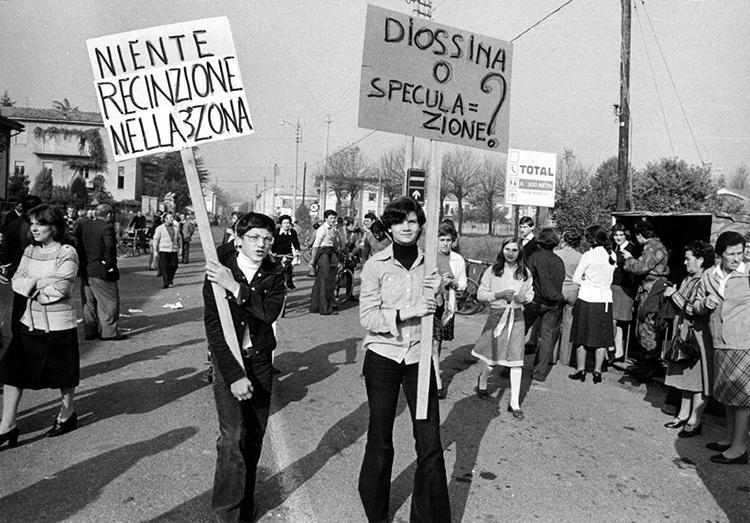
The transaction obviously canceled the judicial proceedings filed by the Region against the chemical industry of Meda which was linked to the criminal proceedings initiated by the Public Prosecutor of Monza in the aftermath of the disaster. The lawyers of the Region stressed, in response to the criticisms that the agreement would have somehow favored Givaudan by avoiding a trial, which, if the judicial procedure had been awaited, they would have spoken of compensation after many years and with great difficulty they would have obtained 103 billion.
The following day, in the debate on the transaction held in the Regional Council, Guzzetti recalled that it was the first time that a substantial recognition of responsibility had been obtained and that, in the context of the ongoing judicial procedure, with the signing of the transaction, Givaudan admitted its responsibilities, assuming the burden of covering the damages caused by ICMESA, whose share capital of one billion was totally inadequate compared to the extent of the damages caused.
On 30 December 1981 the mayor of Seveso Giuseppe Cassina, in the face of the arguments presented before the Basel court by Hoffman-La Roche that underlined an unavailability to transit by the Municipality of Seveso, replied to the Swiss multinational:
“The fundamental point that interests us is the following: we were and have always been fully willing to reach settlement agreements, naturally after the necessary contacts with you. In this regard, all our interventions have remained unsuccessful to this day. [...] We repeat once again our previous and current willingness to take the necessary contacts with you for a transaction ".
On 9 February 1982, Hoffman-La Roche, following Cassina's note of 30 December 1981, confirmed its readiness to reach an agreement:
"On the other hand, as is clear from the correspondence exchanged between our lawyers, and from the briefs lodged before the courts, we have never refused any negotiations since the beginning of the dispute, even though we decidedly rejected any responsibility of our company in relation to the consequences of the "Accident occurred on July 10, 1976".
On the following 10 September, the City Council of Seveso approved the memorandum of understanding with which Givaudan "while challenging its legitimacy and responsibility" undertook to pay the amount of 15.000.000 million Swiss francs, of which 1.500.000 reimbursement of justice and legal costs.
As for the other bodies involved in the affair, the Municipality of Seveso, after the settlement of the settlement had taken place, ensured the renunciation of any further request and action, both in criminal and civil cases, except for requests for future damages that were not foreseeable at the time. , of which, however, the causal link with the event had to be demonstrated.
In his speech, the mayor Cassina underlined the importance of the decision that the City Council was about to take because this decision would have assumed "its historical relevance", as it originated from an event that had seen the Sevesine population and the territory "at the center of the "Worldwide attention, although almost always with negative effects". After a brief history of the events that took place from 10 July 1976, Cassina stressed that "the serious responsibilities" that had been "the cause of those situations" that could not exempt the Council "from expressing a firm condemnation of management methods could not be overlooked. of these plants and production needs "which" in that case "had not" sufficiently taken into account the safeguarding of both the workers employed and the people around them ". The hope remained, Cassina continued, "that in the face of human tragedies such as what had been experienced", it would be possible to "acquire a new hierarchy of value" that would put human beings first "as man first and not profit , efficiency, power ". Cassina concluded by defending the goodness of the choice since it would have been difficult to obtain in the judicial offices a recognition of damages greater than the amount agreed in the transaction.
Three days later, on 13 September, the mayor of Seveso and the president of the Givaudan board of directors Jean Jacques de Pury signed the transaction in Lausanne.
Within three years, therefore, Roche, through Givaudan, closed the disputes opened with all the Italian authorities affected by the release of the toxic cloud and, at the same time, through its office located in Milan, liquidated over 7000 files with payments made directly to private individuals, with a total burden on the Basel multinational of over 200 billion lire.
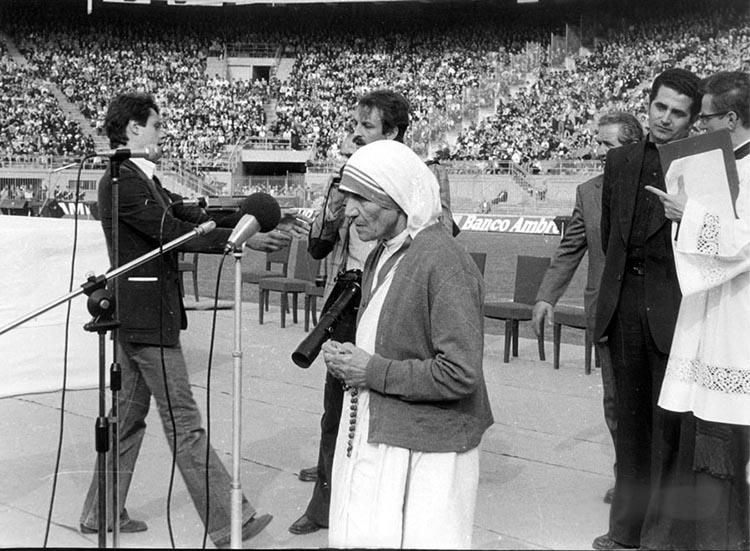
1983. The Bosco delle Querce is born.
On 2 June 1977 the Lombardy Regional Council approved the 5 intervention programs to reclaim the polluted territory. The realization was entrusted to the Special Office for Seveso. Abandoned the idea of building an incinerator oven to eliminate the polluted material, between 1981 and 1984, two waterproofed tanks were built where to deposit the contaminated material. The capacity of the Seveso tank is 200.000 m³, while the capacity of that of Meda is 80.000 m³.
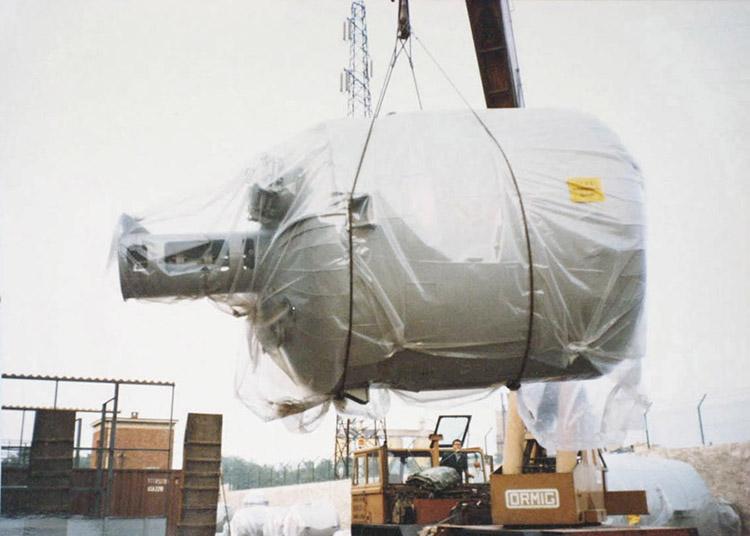
For the safety of the contaminated material, a system of four successive barriers has been adopted, which separate the pollutant from the external environment. The tanks are equipped with a series of control tools that check for any leaks, guaranteeing the protection of the place. Much of the polluted material is represented by the surface soil which was removed from the entire territory of Zone "A" up to a depth of 46 cm. The remains of houses, personal items, animals killed or subsequently killed following the accident (more than 80.000 animals died or killed) and part of the equipment used for reclamation are contained inside the Seveso tank. . The land that today forms the surface layer of the forest comes from other areas of Lombardy.
In 1983 it was decided to design, in what used to be Zone "A" ("A1" - "A5"), a park, the future Bosco delle Querce. Environmental and forestry work began in 1984 and ended in 1986. At the end of 1986 the park was entrusted to the Regional Forestry Agency (ARF). Initially 5.000 tree plants were planted and 6.000 shrubs planted. Thanks to further interventions and the care of the Regional Forestry Company at the end of 1998, the park included 21.753 tree plants and 23.898 shrub plants, that is a quadruple heritage compared to the initial plant inherited from the Special Office for Seveso.
The decision to build a forest after the removal of the land is also due to the popular movements that arose in Seveso after the accident and which strongly opposed the initial decision of the Lombardy Region to build an incinerator oven to burn all the polluted material.
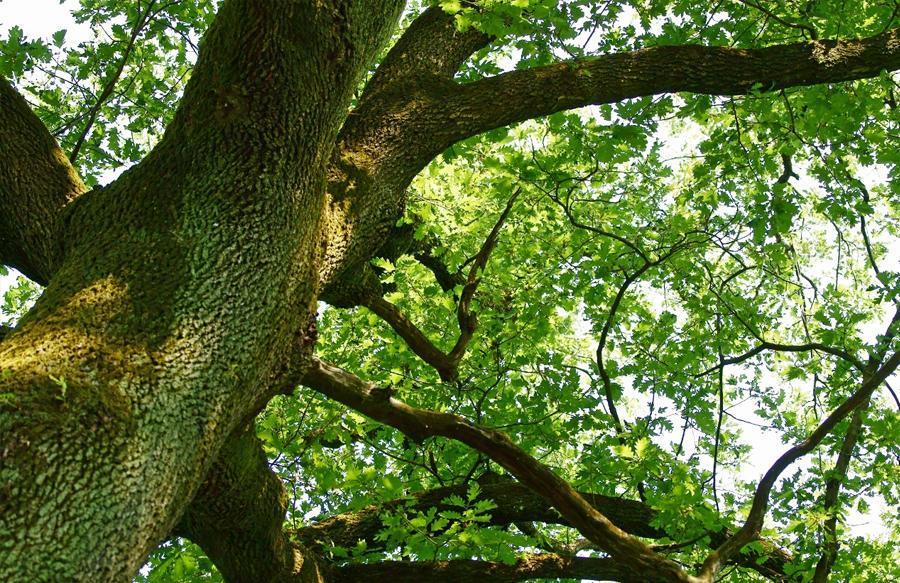
Source:

